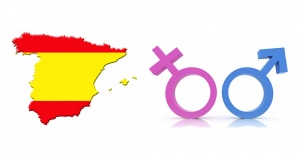Difference between revisions of "Language/Spanish/Grammar/Gender"
Jump to navigation
Jump to search
| Line 8: | Line 8: | ||
The Spanish words have genders and most of the times the male form ends with "o" and the female form ends with "a". | The Spanish words have genders and most of the times the male form ends with "o" and the female form ends with "a". | ||
When ends with "e" normally there are masculin, if it | When ends with "e" normally there are masculin, if it ends with consonant, the gender is determined by the last vowel in the sentence. | ||
Revision as of 22:27, 12 April 2020
Hola Spanish learners,
In Spanish there are two genders, male and female.
The Spanish words have genders and most of the times the male form ends with "o" and the female form ends with "a".
When ends with "e" normally there are masculin, if it ends with consonant, the gender is determined by the last vowel in the sentence.
Examples:
- Ordenador-Computer (the last vowel is "o" so it is male),
- Paz-Peace (the last vowel is "a" so it is female).
We put:
"el" + "the noun" if it is male
"la" + "the noun" if it is female
If it is something that have gender un real Life we put that gender.
Example:
- Madre-Mother (la madre).
